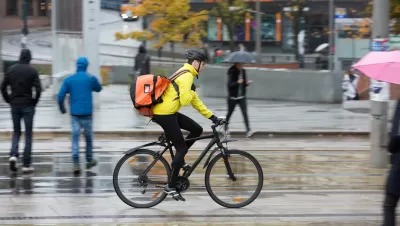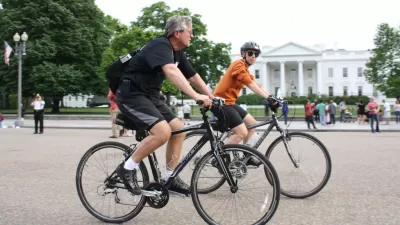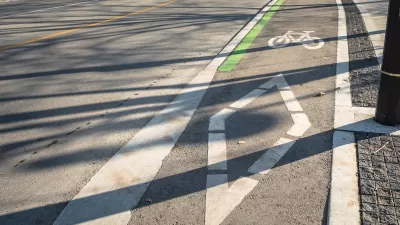In Washington D.C., Maryland, Virginia, North Carolina, and Alabama, the legal policy known as contributory negligence blocks cyclists from claiming damages if they're involved in a crash.

When it comes to cyclists sharing the road with cars, "most states abide by a policy of 'comparative fault' in the event of a crash. This standard holds that if a cyclist or pedestrian can claim less than 50 percent of responsibility for a dust-up, they're entitled to either a full insurance payment, or one commensurate with their level of negligence as determined by a jury."
However, as Eillie Anzilotti writes, "in Maryland, Virginia, North Carolina, Alabama, and Washington, D.C., that is not the case. That's because in those locales, the standard of contributory negligence has not been written out of the books, like it has been in the rest of the United States."
An anachronistic policy, contributory negligence states that if the victim is more than 1 percent responsible for an accident or injury, he or she cannot claim a recovery payment. Bruce Deming, a D.C.-area lawyer who often represents injured cyclists, say contributory negligence "originated in England in 1809 as a means to shield employers from having to compensate harmed members of their workforce." It has been repudiated by most U.S. jurists, and only remains on the books in four states and the capital.
In Washington, a measure to update the policy is having trouble getting through the city council "D.C.'s approach [...] would grant injured people the level of parity they're guaranteed in most of the rest of the country, and it shows the potential for contributory negligence to be struck down on a granular level in a way that the four other states could emulate."
FULL STORY: The Legal Policy That Makes Collisions Especially Harrowing for Cyclists

Study: Maui’s Plan to Convert Vacation Rentals to Long-Term Housing Could Cause Nearly $1 Billion Economic Loss
The plan would reduce visitor accommodation by 25,% resulting in 1,900 jobs lost.

North Texas Transit Leaders Tout Benefits of TOD for Growing Region
At a summit focused on transit-oriented development, policymakers discussed how North Texas’ expanded light rail system can serve as a tool for economic growth.

Why Should We Subsidize Public Transportation?
Many public transit agencies face financial stress due to rising costs, declining fare revenue, and declining subsidies. Transit advocates must provide a strong business case for increasing public transit funding.

Dear Tesla Driver: “It’s not You, It’s Him.”
Amidst a booming bumper sticker industry, one writer offers solace to those asking, “Does this car make me look fascist?”

A Visual Celebration of Manhattan’s Chinatown Elder Community, Through Food
Lanterns, cafeteria trays, and community connection take center stage in this stunning photo essay.

How to Make US Trains Faster
Changes to boarding platforms and a switch to electric trains could improve U.S. passenger rail service without the added cost of high-speed rail.
Urban Design for Planners 1: Software Tools
This six-course series explores essential urban design concepts using open source software and equips planners with the tools they need to participate fully in the urban design process.
Planning for Universal Design
Learn the tools for implementing Universal Design in planning regulations.
City of Santa Clarita
Ascent Environmental
Institute for Housing and Urban Development Studies (IHS)
City of Grandview
Harvard GSD Executive Education
Toledo-Lucas County Plan Commissions
Salt Lake City
NYU Wagner Graduate School of Public Service




























